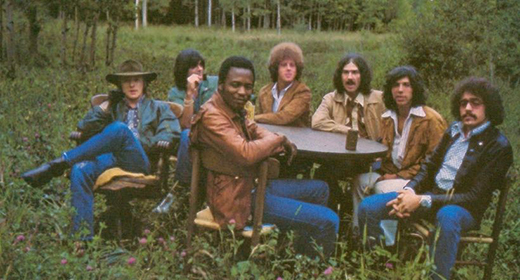How To Meditate: excerpted from Minding the Body, Mending the Mind, by Joan Borysenko
 1. Choose a quiet spot where you won’t be disturbed by other people or by the telephone. This extends to animals as well. Inevitably, if you have a dog or a cat, it will find a way into your space, so arrange to put your pet in another room.
1. Choose a quiet spot where you won’t be disturbed by other people or by the telephone. This extends to animals as well. Inevitably, if you have a dog or a cat, it will find a way into your space, so arrange to put your pet in another room.
Many of us are used to being at the beck and call of the world; this is one time you’re not. This is time you’re giving to yourself. If you don’t take time to recharge, always putting other things first, you can’t be authentically happy, nor will you make others happy.
We had a rule about meditation in our house when the kids were growing up: Do not disturb unless there’s blood involved. It’s as simple as that. This is your time. Time you take for yourself to more fully understand the interaction of your mind, body, and spirit. Time you take to recharge and to present to life itself, a miracle that often goes unappreciated.
2. Sit in a comfortable but balanced position, with back straight and arms and legs uncrossed, unless you choose to sit cross-legged on a floor cushion. Lift yourself up from your hips, so that your spine feels long and graceful. Now imagine that you’re tucking a pair of wings against your back. Your chest will open so that your breathing can be full and relaxed.
3. Close your eyes. This makes it easier to concentrate at first. But if you’re more comfortable with your eyes open, there are two basic choices:
You can keep your eyes relaxed and downcast—at half-mast as I like to put it—and focus on a neutral spot a few feet in front of you.
You can open and lift your eyes—focusing either on the sky or the horizon. This can be especially conducive to engaging with a larger perspective that feels intimate and inclusive, but doesn’t stimulate thinking about your personal situation.
4. Relax your muscles sequentially from head to foot. This step helps to break the connection between stressful thoughts and a tense body. Here’s how to get the hang of relaxing your muscles. Take a moment right now to practice. We’ll use your shoulders as an example of how every body part can be consciously released in tune with your out breath:
Imagine that an umbrella is inflating in your belly as you breathe in, and then folding up as you breathe out. Or imagine that a bird is opening its graceful wings in your belly as you breathe in and closing its wings as you breathe out.
Once you’re able to focus on the breath coming in and going out as a physical sensation of expansion and letting go, focus on letting your shoulders relax on the outbreath. They should relax downward noticeably.
Now that you’ve got a sense of how to relax by letting go as you breathe out, you can consciously do this with your whole body. Starting with your forehead, become aware of any tension there as you breathe in. Let go of any obvious tension as you breathe out, just as you did with your shoulders. Go through the rest of your body in this way, proceeding down through your eyes, jaws, neck, shoulders, arms, hands, chest, upper back, middle back and midriff, lower back, belly, pelvis, buttocks, thighs, calves, and feet. This need only take a minute or two, and you’ll get much better at it as you practice. Noticing your major muscle groups, and letting them relax, is one of the pleasant and interesting sensations that you’ll ever experience. So, just be curious about what you’re feeling. Tune into it and enjoy.
5. Stay aware of your breathing. You’re breathing all the time, aware of it or not. You don’t so much breathe, as you are automatically breathed. You may notice that your breathing gets slower and shallower as the meditation progresses. That’s due to the physiological effects of the relaxation response, the fact that your body requires less oxygen because your metabolism has slowed down.
6. Repeat your focus word silently in time to your breathing. Choose a word or phrase (secular or nonsecular) to repeat on the out breath like One, Om, Peace, or whatever appeals to you. Or, if you choose a longer phrase, you can repeat part on the in breath and part on the out breath. For example, I once had a patient who chose to repeat “Dearest Lord” on the in breath, and “I surrender to your grace” on the outbreath. The peace generated as she did this was palapable in the room.
7. Don’t worry about how you’re doing. As soon as you start to worry about whether you’re doing it right, you’ve shifted from meditation to anxiety. Without doubt, you’ll do this a lot at first; it’s just the habit of the mind to question and criticize our own performance. If you notice that tendency, try labeling it judging, then let go, coming back to the breath and the focus, which are your anchors in the shifting tides of the mind.
Your mind won’t stop for more than seconds at a time at first, so don’t expect it to. What happens is that you, that part of yourself that can watch or witness the mind, is learning to flex its muscles. Each time you notice that you’ve drifted into thought, try labeling where you were, for instance, “thinking, thinking” or “anger, anger” or “judging, judging” and then let it go, getting back to the anchor. In this way, you begin to train your mind. The awareness you develop in meditation will begin to carry over into life, affording more choice in how you respond to situations and enhancing your ability to enjoy life. In meditation there are two basic choices, to keep observing the train of thought as a detached witness or to let go and come back to the breath. Inevitably, you will do both.
The most common experience and complaint about meditation is “I can’t stop my mind from wandering.” That’s fine. Don’t try. Just practice bringing it back whenever you notice it wandering. St. Francis de Sales had a great comment about wandering thoughts: You can’t stop the birds from flying back and forth over your head, but you can stop them from nesting in your hair. Try to do just that. Let the thoughts come and go as if they were birds passing across the blue sky of a clear mind. The clear blue that you will perceive when the thoughts slow down is peace. Peace of mind.
8. Practice at least once a day for ten to twenty minutes. Remember that practice is indispensable to progress at anything. In meditation the session itself is your only goal. In the truest sense, the process is the product. Your aim is to sit and meditate. Even if it seems that the only thing you’re doing is chasing after your mind and occasionally remembering to come back to the breath, remarkably the relaxation response is still most likely occurring. Long before you think you “know how to do it,” you will begin to notice that you’re generally feeling more peaceful and that stress-related physical symptoms are beginning to improve. While there is no goal to reach, it gets easier to stay focused after repeated practice.
If you can sit twice a day for ten to twenty minutes, so much the better. The preferred times are early morning, after a shower and exercise if you do it, but before breakfast, or before dinner. The only times to avoid are when you’re tired, simply because meditation is a concentration exercise (and, if you’re tired, you’ll fall asleep), and just after a heavy meal, since the process of digestion makes you sluggish.









































